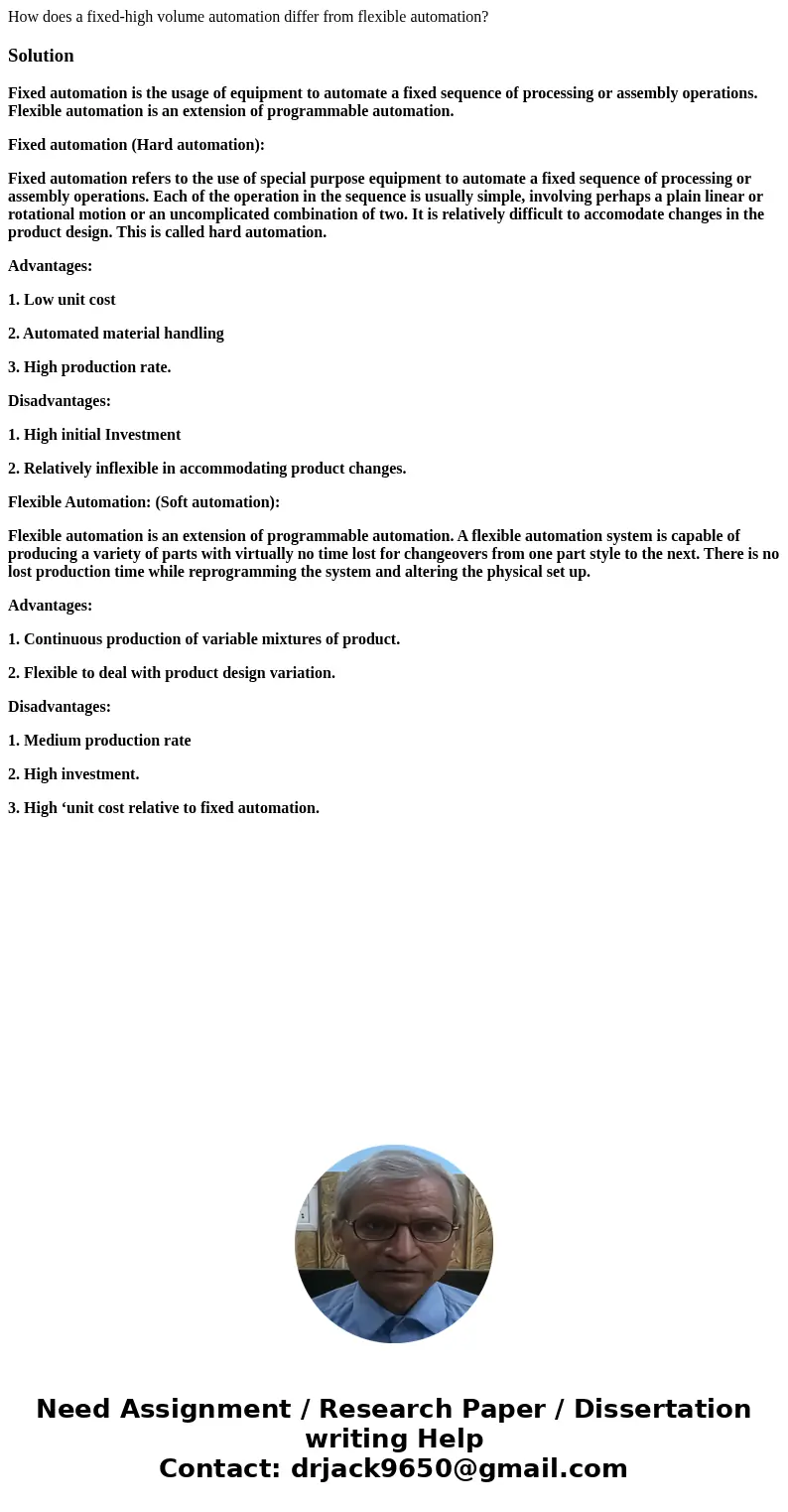How does a fixedhigh volume automation differ from flexible
How does a fixed-high volume automation differ from flexible automation?
Solution
Fixed automation is the usage of equipment to automate a fixed sequence of processing or assembly operations. Flexible automation is an extension of programmable automation.
Fixed automation (Hard automation):
Fixed automation refers to the use of special purpose equipment to automate a fixed sequence of processing or assembly operations. Each of the operation in the sequence is usually simple, involving perhaps a plain linear or rotational motion or an uncomplicated combination of two. It is relatively difficult to accomodate changes in the product design. This is called hard automation.
Advantages:
1. Low unit cost
2. Automated material handling
3. High production rate.
Disadvantages:
1. High initial Investment
2. Relatively inflexible in accommodating product changes.
Flexible Automation: (Soft automation):
Flexible automation is an extension of programmable automation. A flexible automation system is capable of producing a variety of parts with virtually no time lost for changeovers from one part style to the next. There is no lost production time while reprogramming the system and altering the physical set up.
Advantages:
1. Continuous production of variable mixtures of product.
2. Flexible to deal with product design variation.
Disadvantages:
1. Medium production rate
2. High investment.
3. High ‘unit cost relative to fixed automation.

 Homework Sourse
Homework Sourse